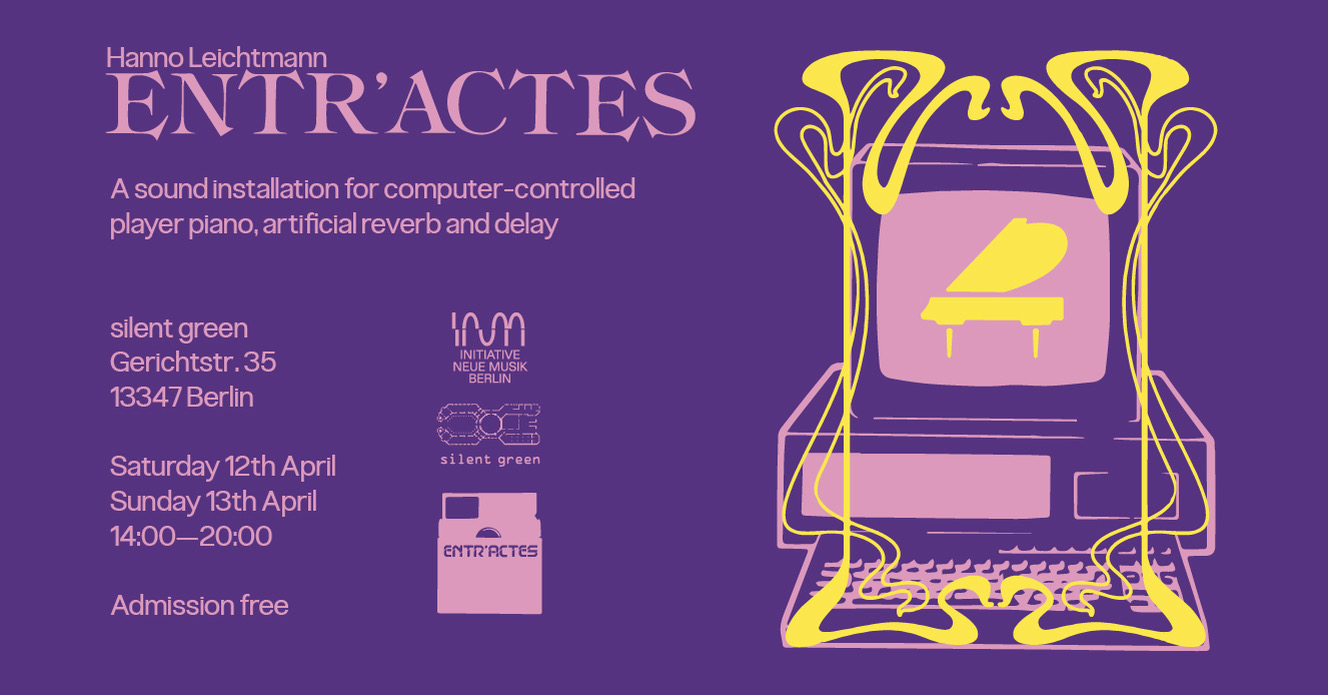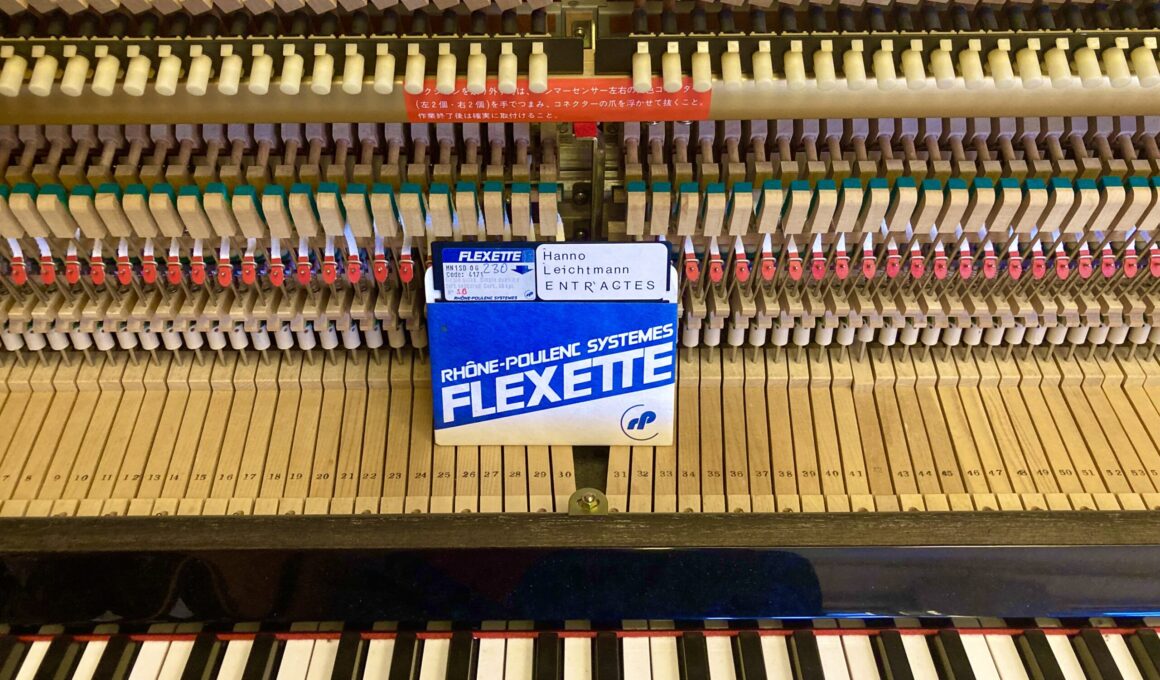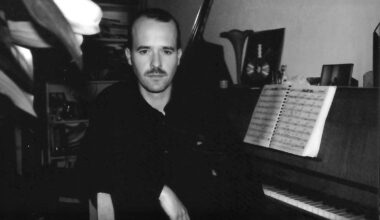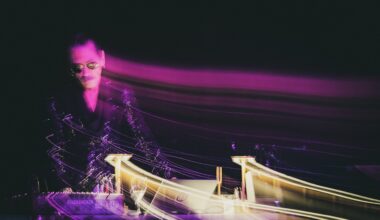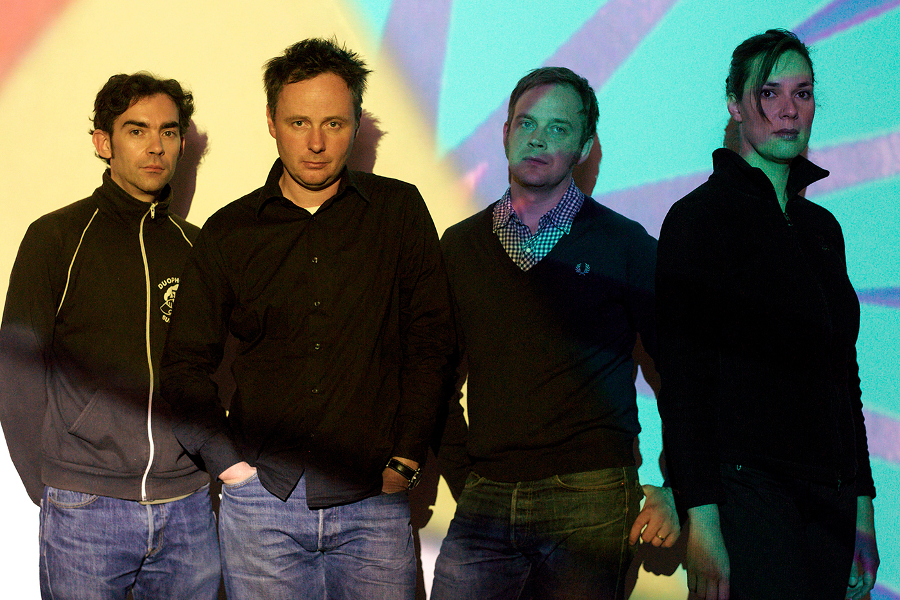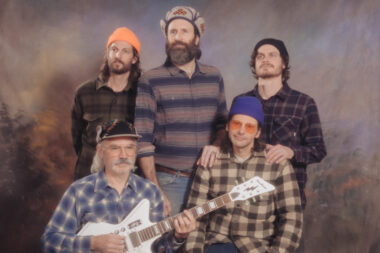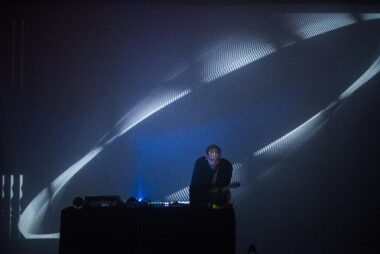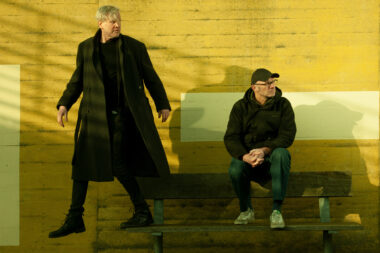Around 1920, the French composer Erik Satie (1866-1925) developed the concept of a musical décor, a music like furniture, a music to be heard in passing: “One must try to realise a musique d’ameublement, a music that is part of the sounds of the environment it takes into account. I imagine it to be melodious (….) without imposing itself.”
Erik Satie thus anticipated many later realities: the continuous music (muzak) in shops, the ambient music of the 1970s, but also the concept of the sound installation itself. Hanno Leichtmann went on to consider the inversion of this concept: A meuble musical, a piece of musical furniture. And that a Disklavier is the perfect piece of musical furniture: one that can play itself! Hanno Leichtmann therefore conceived a sound installation in which a MIDI-controlled piano plays his own version of a musique d’ ameublement.
The possibilities of a MIDI-controlled piano are almost limitless, and it is capable of technical feats that even the most experienced and virtuoso pianists are unable to achieve. Much of the music written for Disklavier takes advantage of these virtuoso parameters. The compositions often follow a scheme of the humanly infeasible, first invented by the iconic composer Conlon Nancarrow.
Leichtmann, however, is less interested in the compositional style of Conlon Nancarrow or similar virtuoso concepts than in a super slow style of playing that actually makes very few changes to the material, but always just enough to prevent it from becoming totally static.His concept is therefore exactly the opposite of an out-of-this-world virtuosity. A few selected chords and notes, at the lowest end of the tempo scale.
Leichtmann composed eight of these slow, floating piano pieces, each lasting about seven minutes before the next one begins. „I want to develop a music that is extremely slow, beautiful, hypnotic and like a musical wallpaper, but one that keeps changing slightly so that you can get involved into the music if you want to.“ Leichtmann will also be microphoning the Disklavier and running it through a Frippertronics setup, which sounds like a tape delay with a very long run time. This in addition gives the music even more spatial depth.
ENTR`ACTES by Hanno Leichtmann
Friday & Saturday, 12+13.4.2025
Doors/Starts 14:00 CET | Free admission
silent green | Gerichtstrasse 35 in 13347 Berlin-Wedding
